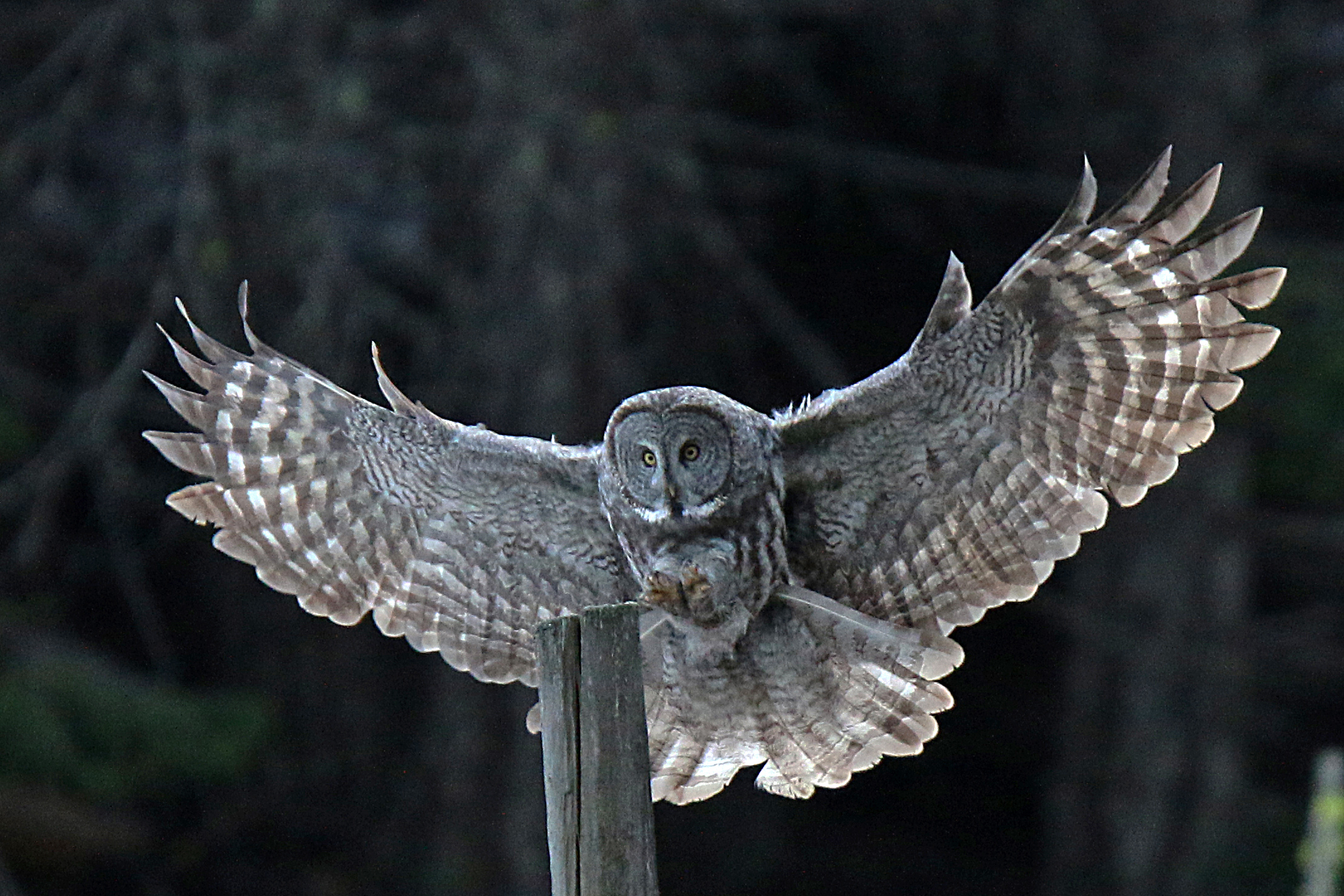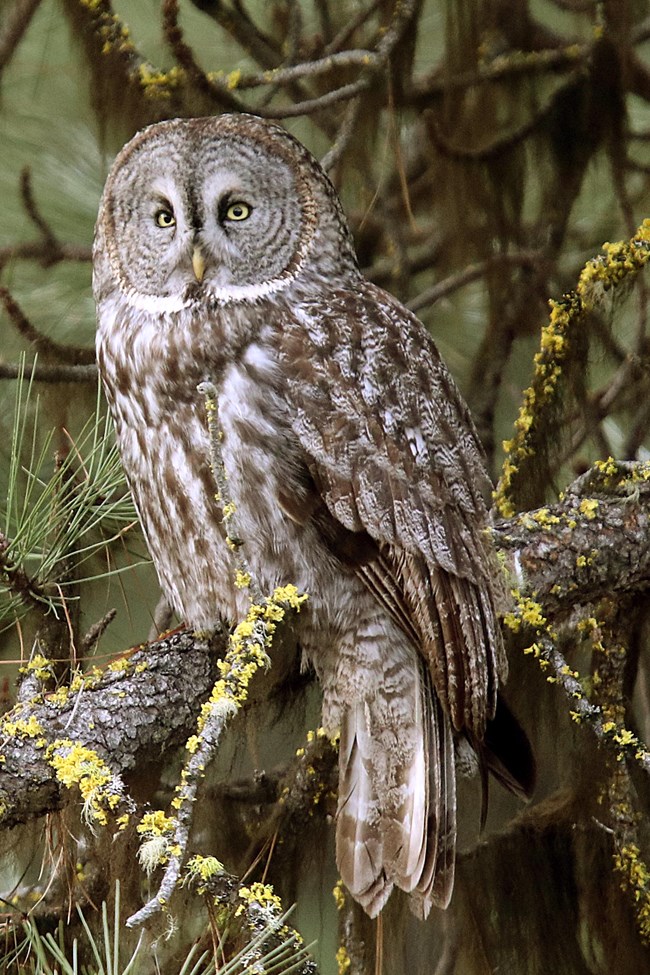The Great Gray Owl: Silent Majesty of the Northern Forests

In the dense coniferous forests of the Northern Hemisphere, a majestic and enigmatic bird silently patrols its territory—the Great Gray Owl (Strix nebulosa). Renowned for its imposing size, striking appearance, and capturing nature, this magnificent owl holds a special place in the hearts of bird enthusiasts and nature lovers alike.

The Great Gray Owl, also known as the Phantom of the North, is the largest owl by length. With a wingspan that can reach up to five feet (1.5 meters) and a height of 2.5 feet (76 centimeters), this owl commands attention. Its distinctive facial disc, framed by concentric circles of gray feathers, gives it an otherworldly and wise appearance. The owl’s plumage is a mesmerizing combination of gray, white, and brown, providing excellent camouflage against the tree bark where it often perches.

As a nocturnal predator, the Great Gray Owl relies on its exceptional hearing and vision to hunt in near-complete darkness. Its facial disc acts like a radar dish, capturing and funneling sounds to its asymmetrical ears, allowing the owl to pinpoint the exact location of prey, mainly small mammals such as voles and mice. The Great Gray Owl’s silent flight, facilitated by specialized feathers that dampen noise, adds to its prowess as an efficient and stealthy hunter.

The Great Gray Owl’s vast range encompasses the boreal forests of North America, Europe, and Asia. It prefers mature coniferous forests with open areas for hunting, making the taiga, boreal, and subalpine regions ideal habitats. During winter, when prey may become scarce in their breeding grounds, these owls may venture south in search of sustainability.

While the Great Gray Owl is not currently listed as endangered, its populations face challenges. Habitat loss due to logging and development, as well as variations in prey abundance, impact their numbers. Climate change also poses a threat, affecting the owl’s preferred habitats and changing the distribution of their prey.

Various organizations and researchers are actively involved in monitoring and conserving Great Gray Owl populations. Habitat preservation and restoration initiatives, along with public awareness campaigns, aim to mitigate the threats faced by these magnificent birds.

The Great Gray Owl stands as a symbol of the wild and untamed Northern forests, embodying both the mystery and resilience of nature. As humans strive to coexist with these awe-inspiring creatures, understanding and appreciating the significance of conservation efforts becomes crucial. The Phantom of the North continues to enchant those lucky enough to catch a glimpse of its silent flight, reminding us of the importance of preserving the delicate balance of our planet’s ecosystems.



